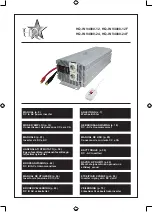
VL Version 2
44
EDIT/E1/MISC/THROAT FORMANT/KSC (Pitch)
The number of breakpoints has been increased from four to eight, allowing much
greater key-scaling precision.
Feature Reference pages: VL1
➯
93; VL1-m
➯
93; VL7
➯
91
EDIT/E1/MISC/MIXING
●
Tap Setting
¯
Driving Point, Fixed, KeyTrack, Fixed(Straight), KeyTrack(Straight)
In the original VL models the “
Tap Setting
” parameter had only two settings:
“
Variable
” and “
Driving Point
”. In Version 2 five settings are available:
“
Driving Point
”, “
Fixed
”, “
KeyTrack
”, “
Fixed(Straight)
”, and
“
KeyTrack(Straight)
”.
The “
Driving Point
” setting has the same effect as in the original version,
while the “
KeyTrack
” setting is equivalent to the original “
Variable
” setting. When
the “
Fixed
” setting is selected the driving point is fixed at the position specified by the
“
Tap Location
” parameter — directly in microseconds through milliseconds: from
20.8
µ
sec to 946
µ
sec, and then from 1.01 msec to 42.7 msec. The
“
Fixed(Straight)
” and “
KeyTrack(Straight)
” parameters are essentially the
same as the “
Fixed
” and “
KeyTrack
” parameters, except that they cover a broader
range of settings for greater sonic variation.
The number of Tap Location key-scaling breakpoints has been increased from 6 to 8
for exacting control.
Feature Reference pages: VL1
➯
98; VL1-m
➯
98; VL7
➯
96
EDIT/E1/MISC/EXCITATION
The parameters in this page can be used to apply a pulse-wave excitation signal to
the string or reed to create a plucked effect.
•
An inverse “K” next to a value means that key scaling can be applied to that
parameter. Position the cursor at the appropriate parameter and then press the
¶
(“
KSC
”) button or
[
button to go directly to the key scaling page for
that parameter. You can return to the excitation parameter page by pressing
the
]
button.
















































